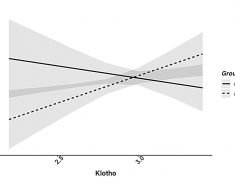Acetaminophen — better known by the brand name Tylenol — is an over-the-counter pain reliever. It can be used to help with mild to moderate headaches, muscle aches, backaches, sore throats and other cold symptoms, menstrual cramps, toothaches and reactions to shots. It is also sometimes used to help ease the pain of osteoarthritis.
Acetaminophen is the name used in the United States and Japan; internationally, the drug is known as paracetamol. It is sold under dozens of brand names, including Tylenol, Panadol and Mapap. It's also a component in more than 100 medications, including Alka-Seltzer Plus Cold & Sinus, NyQuil Cold/Flu Relief, Percocet and Excedrin.
Acetaminophen belongs to drug classes analgesics (pain relievers) and antipyretics (fever reducers). It works by elevating the pain threshold so that only more intense pain is felt. It also tells the brain to cool off the body during fever.
However, unlike nonsteroidal anti-inflammatory drugs (NSAIDs), such as aspirin and ibuprofen, acetaminophen does not reduce inflammation, according to Harvard Medical School. But while NSAIDs can irritate the stomach and intestinal lining, acetaminophen does not.
Dosage
Acetaminophen is available as a tablet, chewable tablet, capsule, liquid, drops (no longer produced in the United States), extended-release tablet, orally disintegrating tablet and rectal suppository. Oral forms can be taken with or without food. It is important not to crush or chew extended-release tablets, as this can increase the risk of side effects since the medicine will be released all at once.
Acetaminophen will is likely most effective if taken when the first signs of pain occur, according to the National Institutes of Health (NIH).
The NIH recommends that doses not exceed 4,000 milligrams of acetaminophen per day (the amount of eight Extra Strength Tylenol). If taking acetaminophen for fever, do not take it for more than three days unless directed by a doctor. For pain relief, adults should not take acetaminophen for more than 10 days and children should not take it for more than five, unless directed by a doctor.
Do not give children acetaminophen products that are made for adults. Determine a child’s dose of acetaminophen products based on his or her weight or age.
Acetaminophen may be included in other medications for coughs or colds. It is important to check the labels carefully if using two or more products at the same time, as taking multiple medications containing the same active ingredient(s) could cause an overdose.
Side effects
According to the NIH, the following are serious side effects of acetaminophen. If experienced, call a doctor immediately and stop taking the drug:
- Red, peeling or blistering skin
- rash
- hives
- itching
- swelling of the face, throat, tongue, lips, eyes, hands, feet, ankles, or lower legs
- hoarseness
- difficulty breathing or swallowing
Overdose
According to the NIH, "acetaminophen overdose is one of the most common poisonings worldwide." Although it is usually quite safe in small doses, it can be dangerous or even deadly if taken in large quantities.
The NIH lists the following as symptoms of acetaminophen overdose:
- nausea
- vomiting
- loss of appetite
- sweating
- extreme tiredness
- unusual bleeding or bruising
- pain in the upper right part of the stomach
- yellowing of the skin or eyes
- flu-like symptoms
In case of these symptoms, patients should seek medical help immediately. Treatment may include N-acetylcysteine, an antidote that can treat acetaminophen overdose, although it works best if given within eight to 10 hours of the overdose, according to the Utah Poison Control Center. Other emergency room treatment may include laxatives, poison antidotes, and activated charcoal. If a large overdose goes untreated, it may lead to liver damage or death within just a few days.
Toxicity
In August 2013, the FDA issued a safety announcement about three rare, but potentially lethal, skin disorders that are associated with acetaminophen. The disorders are Stevens-Johnson syndrome, toxic epidermal necrolysis, and acute generalized exanthematous pustulosis. Any patient who has a skin reaction, including a rash or a blister, while taking acetaminophen should immediately stop taking the drug and seek emergency medical attention.
In response to this warning, concentrated forms and drops of acetaminophen for children are no longer being produced in the United States.
Liver damage
In the United States, acetaminophen is the most common cause of acute hepatic failure and the second most common cause of liver failure requiring a transplant.
On January of 2014, the FDA issued a statement "recommending health care professionals discontinue prescribing and dispensing prescription combination drug products that contain more than 325 milligrams of acetaminophen per tablet, capsule or other dosage unit." Though the risk of liver damage from overdose of acetaminophen has long-been known, this most recent recommendation is targeted at reducing the number of people who overdose by unknowingly taking too many medications that contain acetaminophen.
Liver damage occurs when the liver’s glutathione pathway is overwhelmed by too much of acetaminophen’s metabolite, NAPQI. Toxic compounds then accumulate in the liver and damage it. There are three symptomatic phases of liver damage: nausea, vomiting, loss of appetite, and other flu-like symptoms; an inactive phase during which there is no discomfort; and the appearance of liver blood test abnormalities. For this reason, it is important to seek medical help when initial symptoms appear.
Patients should be sure to tell their doctor if they have any history of liver problems or drink more than two alcoholic beverages per day.
In fact, drinking alcohol can cause the liver to convert acetaminophen in your body into toxic byproducts, according to Harvard Medical School. To safeguard against this, men taking acetaminophen shouldn't have more than two alcoholic drinks per day, and women shouldn't have more than one alcoholic drink per day.
Hydrocodone and acetaminophen
Hydrocodone is a strong narcotic pain reliever. It is sometimes combined with acetaminophen (a non-narcotic) for increased pain relief. It is prescribed to relieve moderate to severe pain and is a main ingredient in many prescription painkillers.
Hydrocodone may be habit-forming. Combined with acetaminophen, it may impair thinking or reactions. It may be best not to drive or do anything that requires alertness while taking this medicine.
Codeine and acetaminophen
A combination medicine of codeine and acetaminophen may be prescribed to treat mild to moderately severe pain. Codeine is narcotic pain reliever and can also be habit forming, so it is important not to exceed the prescribed dose. According to the NIH, serious side effects are difficulty breathing and mood changes, and if experienced, a doctor should be consulted immediately.
Pregnancy
Acetaminophen may affect fetal development during pregnancy, research shows. For instance, a 2016 study in the journal JAMA Pediatrics found that women who took acetaminophen during pregnancy were more likely to have children who later developed behavioral problems, Live Science previously reported. The study included surveys from nearly 8,000 women living in the United Kingdom, and followed up with the women once their children turned 7 years old.
According to a 2014 JAMA Pediatrics study, women who took acetaminophen during pregnancy had a higher risk of having children with attention-deficit/hyperactivity disorder (ADHD), Live Science previously reported. This Danish study included 65,000 women who gave birth between 1996 and 2002.
Likewise, a 2011 review found a link between a woman's acetaminophen use during pregnancy and children's risk for asthma, and another 2014 study found that children whose mothers used acetaminophen for more than 28 days during pregnancy had poorer motor development and communication compared with their siblings, Live Science previously reported.
This article is for informational purposes only, and is not meant to offer medical advice. This article was updated on Oct. 5, 2018 by Live Science Senior Writer, Laura Geggel.
Source: Read Full Article





